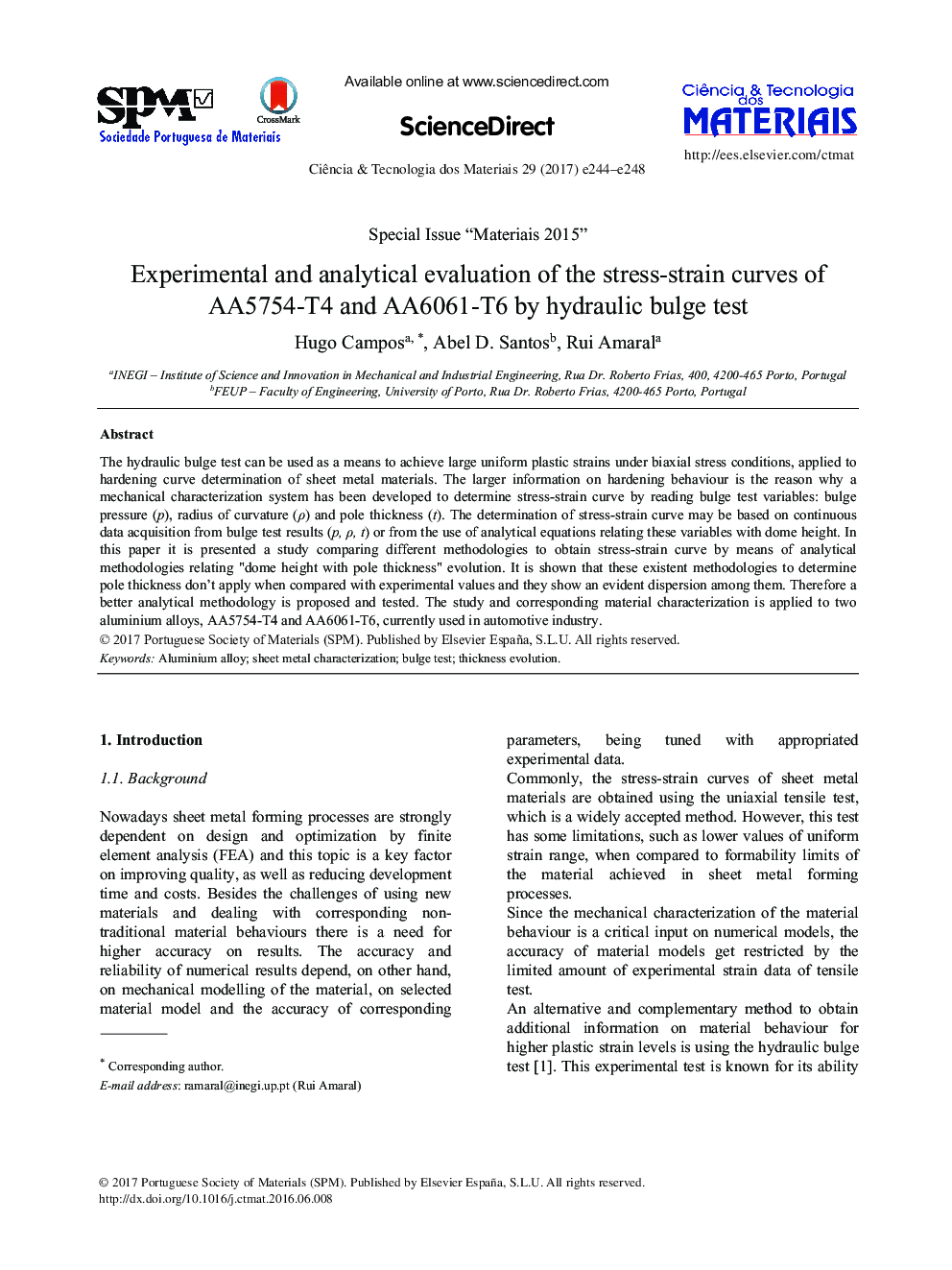| Article ID | Journal | Published Year | Pages | File Type |
|---|---|---|---|---|
| 7211677 | Ciência & Tecnologia dos Materiais | 2017 | 5 Pages |
Abstract
The hydraulic bulge test can be used as a means to achieve large uniform plastic strains under biaxial stress conditions, applied to hardening curve determination of sheet metal materials. The larger information on hardening behaviour is the reason why a mechanical characterization system has been developed to determine stress-strain curve by reading bulge test variables: bulge pressure (p), radius of curvature (Ï) and pole thickness (t). The determination of stress-strain curve may be based on continuous data acquisition from bulge test results (p, Ï, t) or from the use of analytical equations relating these variables with dome height. In this paper it is presented a study comparing different methodologies to obtain stress-strain curve by means of analytical methodologies relating “dome height with pole thickness” evolution. It is shown that these existent methodologies to determine pole thickness don't apply when compared with experimental values and they show an evident dispersion among them. Therefore a better analytical methodology is proposed and tested. The study and corresponding material characterization is applied to two aluminium alloys, AA5754-T4 and AA6061-T6, currently used in automotive industry.
Keywords
Related Topics
Physical Sciences and Engineering
Engineering
Engineering (General)
Authors
Hugo Campos, Abel D. Santos, Rui Amaral,
